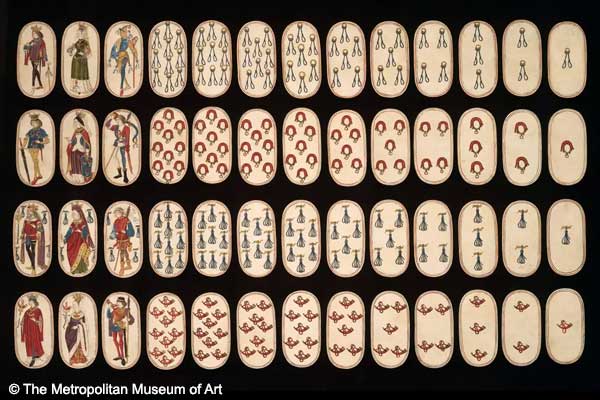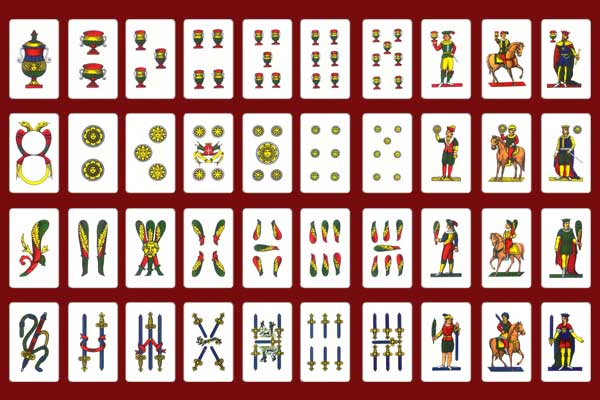Poker Cards: When and Who Invented Them
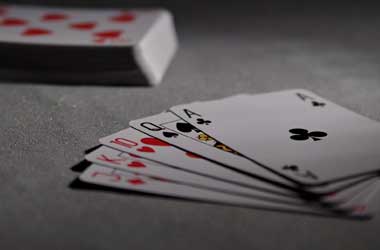
Although they are widely present in the gambling industry, we don’t know much about their history.
That’s why we’ll focus on poker cards in this article.
We’ll answer questions of when and where they originated, who invented them, and how they developed into the modern playing cards we know and use today. Stay tuned!
First Playing Cards
Believe it or not, the first playing cards date back to the 9th century during the Tang Dynasty in China. The earliest reference comes from a Chinese writer, Su E, who mentioned Princess TongCheng playing the leaf game. The first cards contained no numbers or suits, just printed instructions.
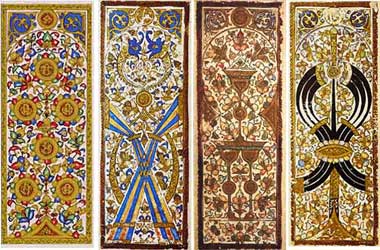
The first mentions of playing cards in Europe come from the 1300s and their 1367 ban in Bern, Switzerland.
Soon after, they became widespread, and many European countries, like Italy and Spain, started having their own versions. The popularity of playing cards only increased from there, and in the 14th or 15th century, we saw the first suits — clubs, coins, cups, and swords. Some Italian playing cards still carry these four suits.
First Poker Cards
As playing cards made their way through the world, so did poker cards. You’ll notice similarities in their history compared to the first playing cards.
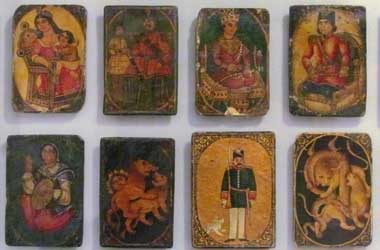
Others claim that poker comes from the Persian game As Nas, which first appeared in the 16th century.
There are indications that poker has European roots as well. For example, Poque from France and Pochen from Germany served as inspiration for the 16th-century Spanish poker game Primero. It included three poker cards dealt to each player and bluffing as the key element of the game.
America got its first poker cards soon after when French colonists brought them to their settlements. The Americans anglicized the game, giving it the name Poker, and modernized it over time.
Suits, Ranks, and Jokers
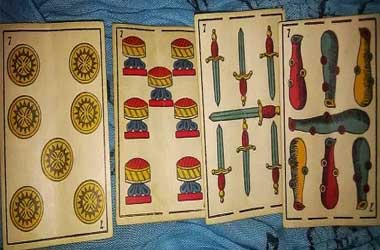
This might indicate that the English used the Spanish version of playing cards before introducing the French one.
The numbers ranging from two to ten indicate their card spots. There are also three more court cards — jack (previously called prince), queen, and king. These three cards are symbolically equal to numbers 11, 12, and 13, in that order. The ace card is actually the number one card.
Some games place aces as the highest-ranking card after the king, which is common in blackjack but not in poker.
A standard 52-card deck contains at least two jokers (or even more sometimes). The pip is a traditional court jester. They serve as the highest trump card in certain games, like Euchre. However, poker does not use them.
First Card Designs
The images of the king, queen, knight, and knave first appeared and then became common in European packs of 56 cards in the 15th century. After the French revolution, the ace stood as the highest-ranking card in the pack, above the king.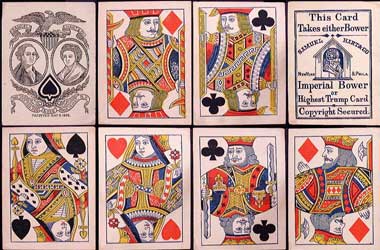
Almost two centuries later, in 1864, a French painter Samuel Hart, created a deck with the same innovation in mind.
Not long after, the sharp corners of the cards were replaced with round edges to avoid fraying. Although blank backs were common among American, British, and French players, they soon became impractical as people would write on them, put their own advertisements, and so on.
How Did the Modern Card Format Originate?
You might not have known that modern cards come in three categories based on suits in each deck — Latin, French, and Germanic, while Italian and Spanish suits are closely related to Latin ones.The French 52-card deck is preserved from the original Mamluk deck, excluding jokers.
On the other hand, the Germanic and Latin suits differ, as the former drops the lower-valued pip (a suited spot) cards while the latter removes higher-valued cards.
How Did Poker Come About?
Once the French colonists brought poker to America, the game got its first structure. In the mid-1800s, the five-card game evolved into a drawing game, and its deck of 20 cards expanded to 52.Then, to make things more exciting, they added another round of betting. Here lie the first instances of five-card hand rankings, later called “flush” Not long after, in the 1870s, the hand called “straight” was also added to the game.
Poker did not change much over the last 100 years, with decks and cards remaining the same. However, it would be remiss not to mention the most popular poker variant today, Texas Hold’em, which caused quite a stir when it first appeared. The game allowed up to ten players to participate in a single hand, with five community cards and only two hole cards. So, the game significantly shifted from a five-card game to two in hand and five more on the table.
Hi, I am the Chief Editor of top10pokersites.net, this site is dedicated to all thing poker. I have been working around the poker industry for the last 15 years, with different brands. The main purpose of this site is to keep you uptodate with the industry and offer you the best deals around.
